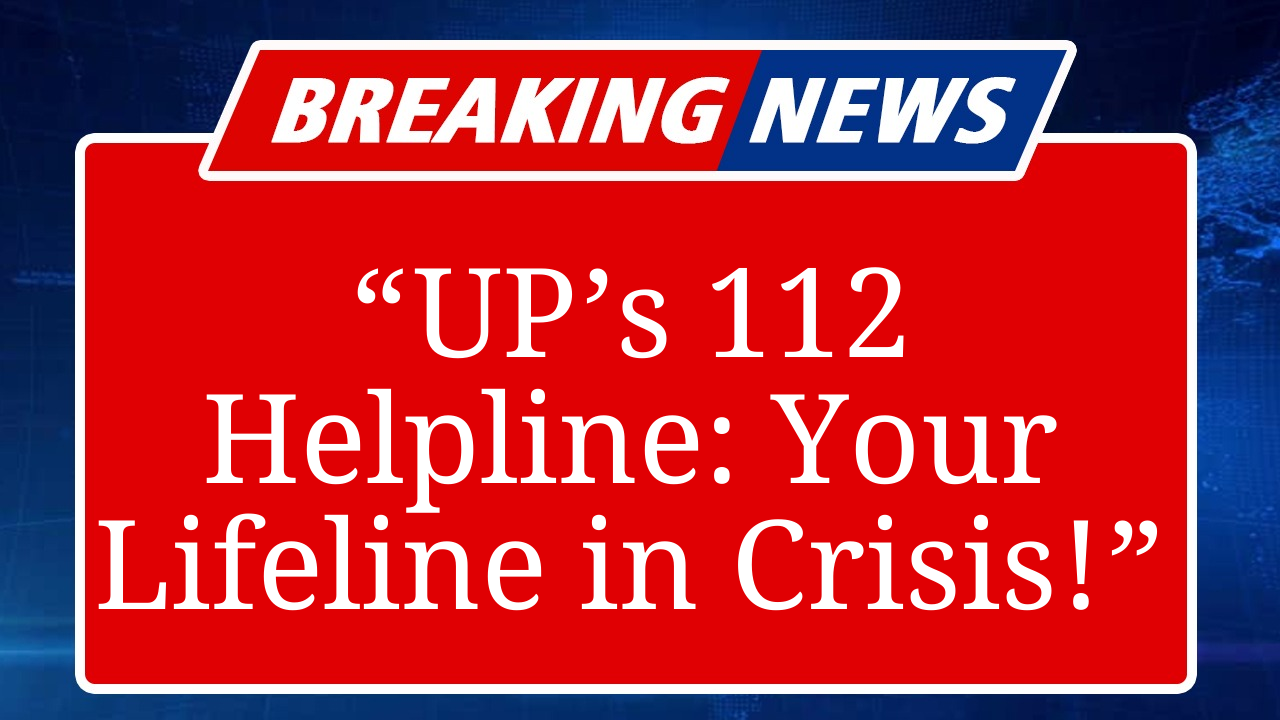UP’s enhanced disaster helpline, accessible via 112, ensures rapid response to crises like floods and accidents. Backed by the National Disaster Management Authority, it connects citizens to police, fire, and medical services. Recent data highlights its role in saving lives during Uttarakhand’s flash floods, with ongoing efforts to improve coordination and outreach.
Uttar Pradesh Strengthens Emergency Support Through Disaster Helpline
In a bid to fortify its disaster response mechanism, Uttar Pradesh has prioritized its unified emergency helpline, 112, to provide swift assistance during crises. This single-number system, part of the Emergency Response Support System (ERSS), integrates police, fire, ambulance, and disaster management services, ensuring seamless coordination across the state. Launched under the Nirbhaya funds scheme, the helpline operates 24/7, catering to emergencies ranging from natural disasters like floods and earthquakes to accidents and medical crises.
Recent data underscores the helpline’s critical role. In 2025, Uttar Pradesh reported over 226,815 vulnerable individuals, including migrant workers, supported through targeted interventions during disasters like Cyclone Amphan and the COVID-19 crisis. The helpline facilitated rapid distribution of food, shelter kits, and cash transfers, particularly in coordination with organizations like ADRA India. During the recent Uttarakhand flash floods, which claimed over 60 lives in Kishtwar, the helpline was instrumental in connecting stranded individuals to rescue teams, including the National Disaster Response Force (NDRF).
The NDRF, with its dedicated helpline (+91-9711077372), complements the state’s efforts. Since its inception, the NDRF has saved over 1.59 lakh lives nationwide, with UP benefiting significantly from its rapid deployment during floods and landslides. The state’s Emergency Response Centres (ERCs) leverage real-time data from the India Meteorological Department (IMD) and Central Water Commission (CWC) to issue flood and weather alerts, ensuring proactive measures.
Uttar Pradesh’s disaster management framework, aligned with the National Disaster Management Authority (NDMA), emphasizes preparedness and mitigation. The NDMA’s guidelines, rooted in the Disaster Management Act of 2005, promote a multi-hazard approach. In UP, this translates to community training programs and partnerships with NGOs like Rapid Response, which recently supported thousands in flood-hit areas with food, medical camps, and livelihood programs.
The 112 helpline also features a mobile app with a “SHOUT” function, designed for women and children to alert nearby volunteers during emergencies. This has proven effective in rural UP, where access to immediate help is often limited. The state’s collaboration with UNICEF further strengthens child-centric disaster risk reduction, addressing vulnerabilities in flood-prone districts.
Despite its successes, challenges remain. Experts highlight the need for better infrastructure in hazard-prone zones and increased public awareness about the helpline. Recent floods in Uttarakhand, where 274 stranded individuals were evacuated, exposed gaps in rural connectivity, delaying response times. The state is now investing in climate-resilient infrastructure and early warning systems to bridge these gaps.
Disclaimer: This article is based on real-time data from government sources, NDMA reports, and credible news outlets like Times of India and India Today, alongside insights from disaster relief NGOs like ADRA India and Rapid Response. Information is accurate as of September 2, 2025, and subject to updates as new data emerges. Always verify helpline numbers with official sources before use.

